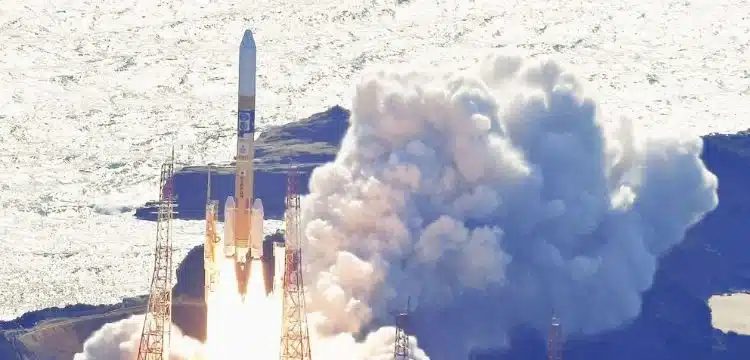[vc_row][vc_column][vc_column_text dp_text_size=”size-4″]Japan has launched a lunar exploration spacecraft aboard a homegrown H-IIA rocket, with the aim of becoming the world’s fifth country to successfully land on the moon early next year. The Japan Aerospace Exploration Agency (JAXA) successfully executed the launch from the Tanegashima Space Center in southern Japan after facing weather-related delays in the past month.
This lunar mission, often referred to as the “moon sniper,” involves the Smart Lander for Investigating Moon (SLIM), and Japan’s goal is to achieve pinpoint precision in landing, coming within 100 meters of the intended lunar target. The mission, valued at $100 million, is set to begin its landing procedures by February 2023 following a carefully planned and fuel-efficient trajectory.
Read more : Why Is Everyone Trying To Land At The South Pole Of The Moon?
The primary objective of SLIM is to demonstrate high-precision lunar landing capabilities, focusing on “landing where we want” rather than “landing where we can,” as stated by JAXA President Hiroshi Yamakawa. Hours after the launch, JAXA confirmed that SLIM was operating normally, marking a crucial milestone for the mission. This development comes in the wake of India’s successful moon landing with the Chandrayaan-3 mission, making India the fourth nation to achieve this feat, while Russia faced difficulties with its Luna-25 lander. Previous Japanese lunar landing attempts faced challenges, but SLIM is poised to touch down on the near side of the moon, close to Mare Nectaris, conducting advanced optical and image processing technology tests and analyzing lunar rock composition.
Alongside the SLIM lunar mission, the H-IIA rocket also carried the X-Ray Imaging and Spectroscopy Mission (XRISM) satellite, a collaborative project involving JAXA, NASA, and the European Space Agency. XRISM’s objective is to observe plasma winds in the universe, shedding light on the evolution of stars and galaxies. Mitsubishi Heavy Industries managed the rocket’s manufacturing and launch, achieving a remarkable success rate close to 98% for H-IIA launches since 2001. Despite recent setbacks in Japan’s space missions, including a launch failure and engine explosion, the country plans to collaborate with India on the Lunar Polar Exploration Mission (LUPEX) and aims to send an astronaut to the moon in the latter half of the 2020s as part of NASA’s Artemis program.[/vc_column_text][/vc_column][/vc_row]











